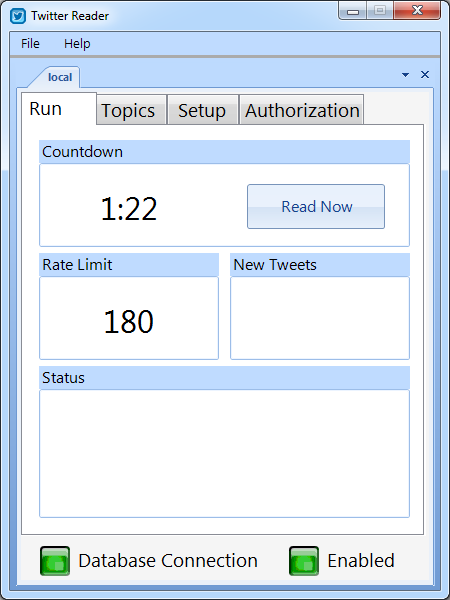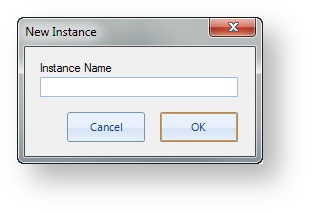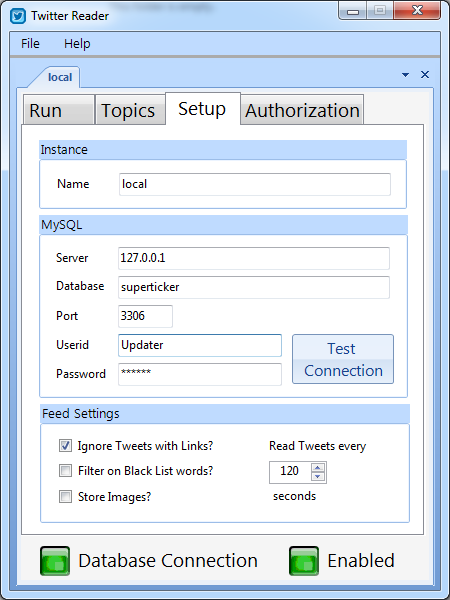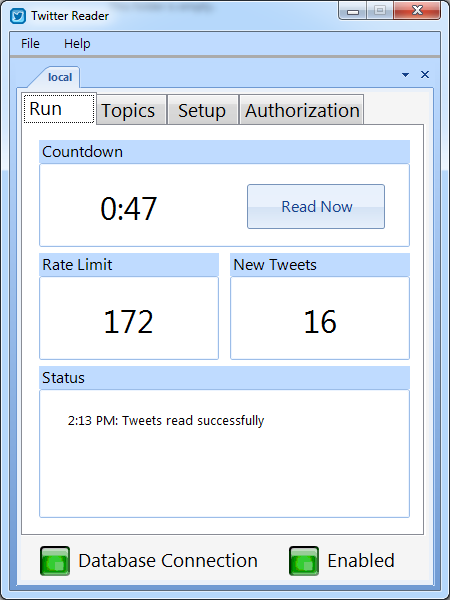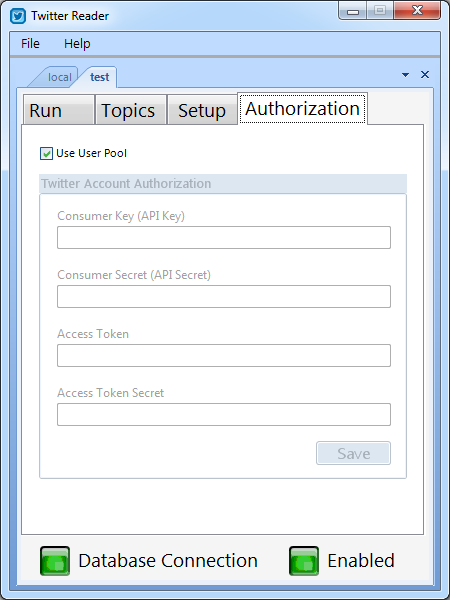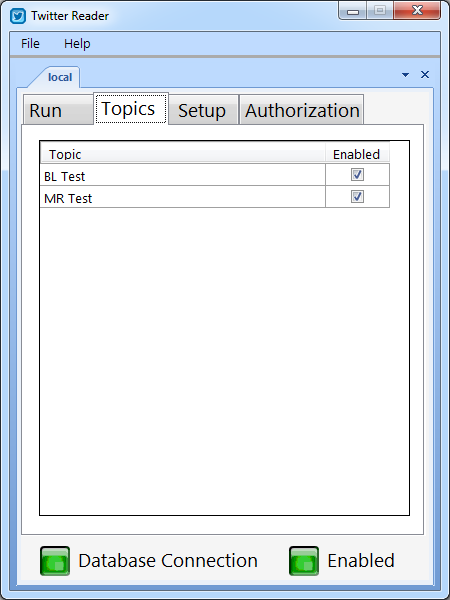Twitter Reader is an agent that runs in the background on the data server, such as TweetOut or Super Ticker. The Twitter Reader agent connects directly to the database. It reaches out to Twitter and returns valid content based on your enabled topic searches created in Flow.
Twitter topics are set up and managed in Flow for the Twitter Reader agent to populate using the Flow Configuration > Twitter Topic Control. See the topic Twitter Topic Control for details.
Important: The Twitter Reader agent must be running in order to receive new content. If you are troubleshooting a lack of new content, ensure that the Twitter Reader agent is running and functional using the Agent Status.
Cloud Instance or Local Instance?
Customers using a cloud instance of Super Ticker do not need to manage the Twitter Reader themselves; Bannister Lake manages it for you. For assistance with your instance of Twitter Reader, contact Bannister Lake Support.
Customers using a local instance can access and manage their own instance of Twitter Reader.
- In a standard installation, Twitter Reader is available on the server, also known as the Flow Server or database server.
- In a custom installation, Twitter Reader may be located elsewhere. See your local system administrator for details.
Access Twitter Reader
To access the Twitter Reader agent, run the agent from its desktop icon on the server.
Run Twitter Reader for the First Time
The first time you run the Twitter Reader, you are prompted to create a new server connection instance. Enter an Instance Name and click OK.
Setup Tab - Feed Settings
Using the Setup tab, you can also configure the following feed settings:
| Option | Description |
|---|---|
| Ignore Tweets with Link? | This checkbox will determine whether tweets that contain links are ignored or kept. |
| Filter on Black List words? | By default, the Twitter Reader automatically removes Tweets that contain words found in the Black List. You can turn off Black List content validation by disabling this option, though it is not recommended. For more information on Black List filtering, see the topic Black List Control Module for details. |
| Store Images? | You can choose to store images attached to Tweets in the database to use in a broadcast by enabling this option. By default, images are not stored in the database. |
| Read Tweets Every X Seconds | You can configure how often Tweets are read using this option. This value must be a minimum of 60 seconds. |
Run Tab Details
The Run tab displays the following details:
| Option | Description |
|---|---|
| Countdown | By default, the Twitter Reader attempts to retrieve data every two (2) minutes. You can adjust this frequency on the Setup tab; however, the minimum frequency must be one (1) minute or more. Click Read Now to manually retrieve data on demand and bypass the countdown clock. |
| Rate Limit | Twitter only allows data clients like Twitter Reader to make a limited number of calls for new data in a given hour to control abuse. If the rate limit reaches zero (0) no new tweets will be retrieved. To avoid exceeding Twitter’s limits, disable any unnecessary TweetOut Twitter topics in Flow. See the topic Twitter Topic Control Module for details. |
| New Tweets | The number of new Tweets added during the last data retrieval. |
| Status, Database Connection, & Enabled |
|
Authorization Tab
The Authorization tab is used to define the twitter authorization for communicating with the Twitter API.
By default, Twitter Reader uses a pool of twitter users setup specially for Twitter Reader. This is a finite set of users and affects the rate limits when retrieving tweets from Twitter. This pool is shared by all Twitter Reader users who have "Use User Pool" defined.
A better approach is to create your own authorization. Here are the steps:
- Login into twitter using any account (personal or company).
- Go to Twitter Application Management Page
- Click Create New App button
- Enter in an application name (any name will do)
- Description can be "Application for Twitter Reader"
- For website, you can use: http://bannisterlake.com
- Keep Callback URL empty
- Agree to the Developer Agreement
- Press "Create your Twitter application" button.
- Go to "Keys and Access Tokens" tab for your new app
- Click "Create my access token" button
- Deselect the Use User Pool in Twitter Reader's Authorization tab which enables the authorization fields below.
- You now should have the 4 fields needed to enter in the Authorization fields. They are Consumer Key (API Key), Consumer Secret (API Secret), Access Token and Access Token Secret.
Topics Tab Details
The Topics tab shows you all of the Twitter topics configured and enabled in Flow.
Check for Updates
When you open Twitter Reader, it automatically checks for updates and prompts you if a newer reader version becomes available.
You can manually check for updates at any time by selecting Help > Check for Updates.
Multiple Server Instance Support
You can create and manage multiple server instances for the Twitter Reader.
- To create another instance, select File > New Instance.
- Assign the instance a name and configure that instance for a specific database.
In this section:
